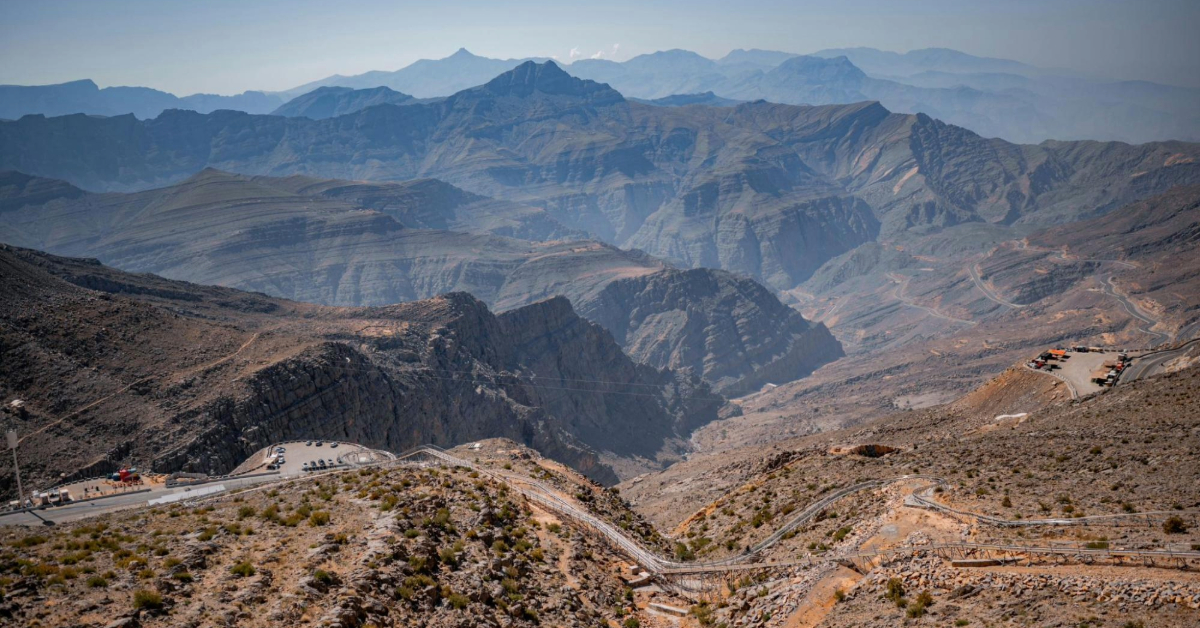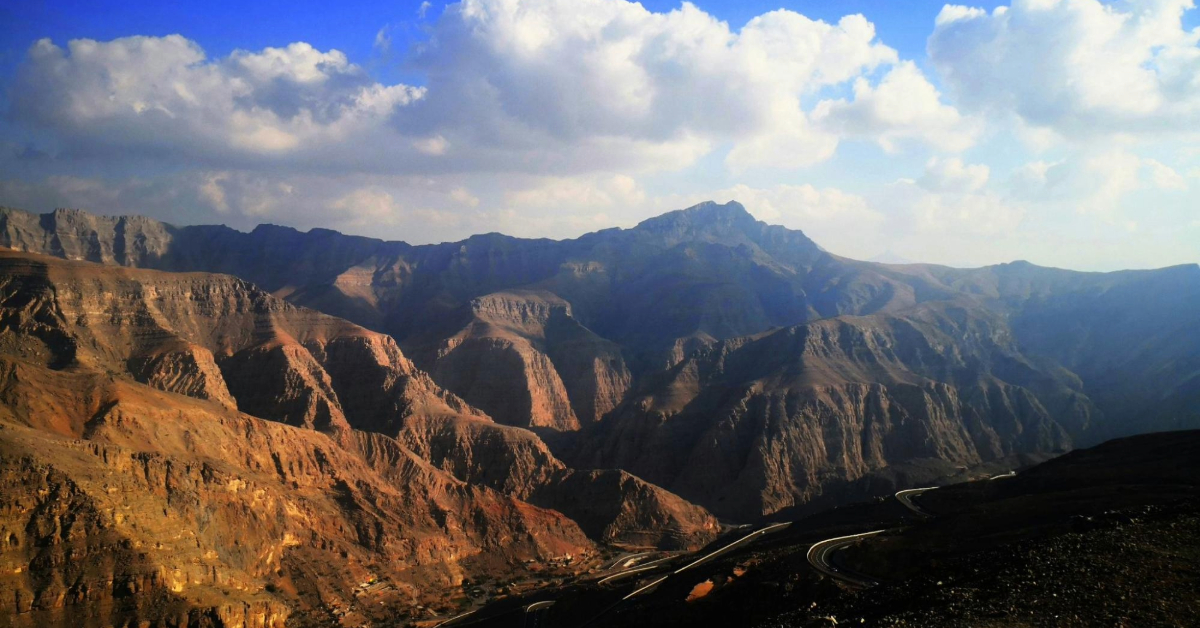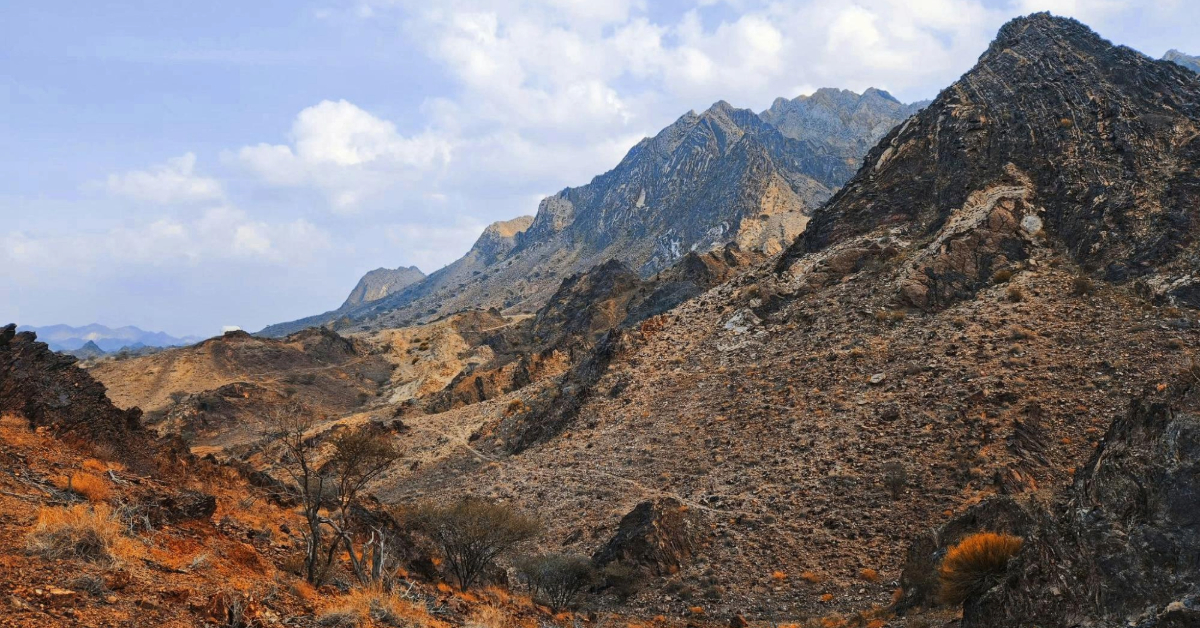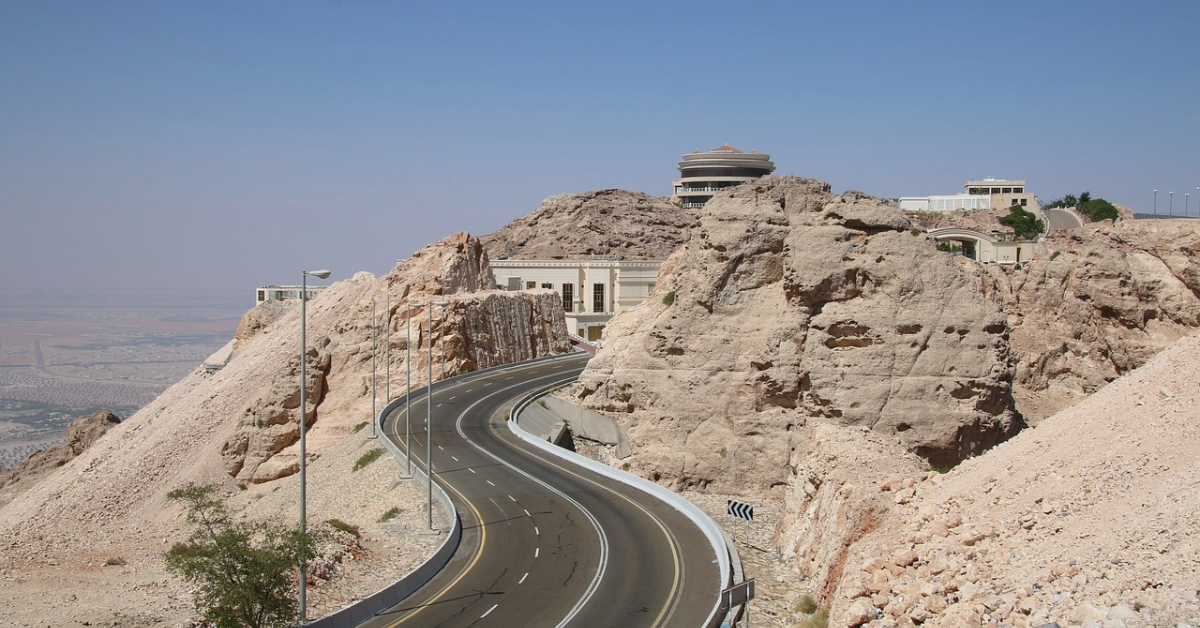When you picture the UAE, what comes to mind first? Probably the sleek skyline of Dubai or the vast stretches of golden desert. But here’s something most people don’t expect: the UAE is also home to rugged mountain ranges, lush wadis, and some of the most breathtaking highland views in the region. From fossil-rich cliffs and ancient tombs to adrenaline-pumping ziplines and peaceful camping spots, the mountains of the UAE are full of surprises.
Whether you’re planning your next weekend adventure, a family outing, or a serious hiking challenge, this guide will introduce you to the highest, most scenic, and most fascinating mountains in the UAE and help you plan your trip like a pro.
- Exploring the UAE’s Mountain Landscape
- Mountains in the UAE
- Comparison table for mountains in the UAE
- Tips for mountain explorers
- Key takeaways
- FAQs

Exploring the UAE’s mountain landscape
When people think of the UAE, towering skyscrapers and golden deserts usually come to mind. But tucked away in the eastern and northern corners of the country lies an entirely different world, the Hajar Mountains.
Stretching across the UAE and into Oman, the Hajar range is the backbone of the country’s mountainous geography. These rugged peaks are the highest in the Emirates and some of the most historically and geologically significant in the region.
The UAE’s tallest and most dramatic mountains, including Jebel Jais, Jebel Hafeet, and Jabal Yibir, are all part of this ancient range. In particular, the section that runs through Ras Al Khaimah (RAK) is known for its high elevations, adventure tourism, and cooler microclimates, making it a favourite among hikers, campers, and explorers.
From archaeological sites and fossil-rich cliffs to panoramic trails and hidden wadis, the UAE’s mountains offer something far beyond a typical desert experience.
Mountains in the UAE
Let’s explore some of the mountains found in the UAE.
1. Jebel Jais
Jebel Jais is part of the Hajar Mountains range on the UAE-Omani border. The mountain’s height is 1,934 meters. The summit is on the Omani side, but a high point west of this peak is considered the highest point in the United Arab Emirates, at 1,892 m (6,207 ft) above sea level. The beautiful surrounding valleys of this mountain reflect prehistoric settlements and tribal movement. Archaeologists have found prehistoric stone houses and pottery fragments near the base of Jebel Jais. These archaeological remains date back to 1600 – 1250 BCE.
Tourist features: This mountain is home to the world’s longest zipline, located in the Jebel Jais Adventure Park. The mountain’s cooler climate, up to 8-10°C, makes camping exciting. If you are a sports lover, you will enjoy mountain runs and cycling challenges!

2. Jabal as Sayh
Jebel as Sayh is a mountain in the north-eastern part of the Hajar Mountains region, on the border between the United Arab Emirates and Oman. Its elevation is about 1,746 meters above sea level. It has folded sedimentary rock and limestone with steep inclines and rugged valleys.
Tourist features: It is part of a rugged and dramatic mountain landscape that draws hikers to the region. Hiking can be moderate to challenging in this region. A challenging trail known as Stairway to Heaven runs through Wadi Litibah and leads to the foot of the mountain.
3. Jabal Ar Rahrah
Jabal Ar Rahrah in the UAE is known for its scenic beauty. It is in the Hajar Mountains, near villages and wadis inland from Ras Al Khaimah’s coast. The mountain is 1,691 meters high, with rocky terraces and springs feeding small farms. The summit is located in Oman.
Tourist features: It is an excellent location for road adventures and camping. The mountain gives an authentic glimpse of rural mountain life away from the crowds.
4. Jabal Sal
Jabal Sal is located in the Hajar Mountains, on the border between the Emirates of Ras Al Khaimah and Oman. The height is about 1,575 meters above sea level. Because of its height, the mountain participates in the seasonal transformations. Water from the mountain’s slopes feeds into the surrounding wadis.
Tourist features: Jebel Sal is a less famous place, meaning there are fewer crowds and more discovery. It is suitable for hikers who like quieter and less commercial trails. The view from Jabal Sal is rewarding because of the geography of the neighbouring borderland.
5. Jebel Harf Tila
Jabal Harf Tila is a mountain in Ras Al Khaimah, part of the Hajar Mountains. It is about 1,568 metres above sea level. It is known for its rough, rocky terrain and the challenging hiking trails that lead to its summit, which is also known as the Twin Brothers peak.
Tourist features: The mountain is popular among experienced hikers. Several routes lead to the Jebel Harf Tila summit, and most are considered moderately difficult due to rough, rocky terrain and loose scree. The summit offers stunning views of all seven of the UAE’s tallest peaks.

6. Jabal Yibir
Jabal Yibir, also known as Jabal Mebrah or Jabal Al-Mebrah, is located in the central section of the Hajar Mountains in the northern part of the UAE. It is the highest point in the country, reaching 1,527 meters. It was once home to the Sharqiyin tribe. A military installation is at the summit of the mountain.
Tourist features: Jabal Yibir offers less crowded hiking trails and a scenic drive with hairpin turns. From one viewpoint, you’ll even be able to see the Dubai skyline along with the sunset. The drive offers spectacular panoramic views of the surrounding area. Access is only permitted up to an altitude of 1,360.
7. Jabal Yabana
Jabal Yabana is located in the Hajar Mountains in the Emirate of Ras Al Khaimah, very close to the border with Oman. The peak’s elevation is about 1,459 meters. The area around the mountain is almost entirely desert and barren. The wadis around it fill after seasonal rains; hikers report water flow and green patches in lower elevations.
Tourist features: This mountain offers a raw hiking experience. The well-known route begins from the village of Helek and is reported as difficult. The summit’s view is rewarding, with a beautiful panorama of the Hajar ridges, valleys, and neighbouring peaks.
8. Jabal Qada’ah
Jabal Qada’ah, also known as Jabal Al Aḩqab, is located in the Hajar Mountains range on the northeast side of the UAE. Nearby villages include Mak Sikek, Silay AI Khatami, Magam, and Hebs village. The summit elevation is about 1,375 meters above sea level. The mountain contributes to local hydrology; the ridges drain into Wadi Qada’ah and several dry falls.
Tourist Features: The best place to explore if you are a hiker. There are hiking routes that approach from Wadi Railah and Wadi AI Hayilah, passing through villages like Haqqab, and herbs. This is the best place to visit if someone is looking for an offbeat adventure.
9. Um Alnosoor
Um Alnosoor, also known as Jabal Hatta, is in the Hajar Mountains near Hatta. Hatta is the island exclave of Dubai. The elevation of the mountain is approximately 1,280 meters above sea level.
Tourist features: There are recorded hiking trails, such as the trail to the Um Alnosoor summit, also known as the Mother of Eagles. Um Alnosoor’s interesting features are its height, remoteness, and beautiful view.
10. Jebel Hafeet
Jebel Hafeet is a treasure of historical evidence. Due to its proximity to the main range, it is considered an outlier of the Hajar Mountains. It reaches around 1,249 meters. This mountain is formed from ancient marine limestone and is rich in fossils. In 1950, 500 beehive tombs were discovered at the foothills of the mountain. These graves from the early Bronze Age define the ‘Hafit Period’ in UAE archaeology.
Tourist Features: At the base of Jebel Hafeet, there is Green Mubazzarah. This green haven has natural hot springs, a lake, and a recreational park area. It offers a children’s playground, walkways, and streams and is one of the best places for camping.
Comparison table for mountains in the UAE
As per POI Data, there are 304 mountain peaks in the UAE as of June 2025. Among these, some of the highest peaks are listed in a chart with key features for quick reference.
| Mountain | Height (m) | Highlights & Tourist Features |
| Jebel Jais | 1,892 (UAE high point) | Home to the world’s longest zipline, cool climate, cycling & hiking trails, and prehistoric archaeological sites |
| Jabal as Sayh | 1,746 | Known for the Stairway to Heaven hike, steep and dramatic terrain, and limestone valleys |
| Jabal Ar Rahrah | 1,691 | Scenic & rural, surrounded by wadis and farms, ideal for camping and road adventures |
| Jabal Sal | 1,575 | Quieter, less commercial, feeds surrounding wadis, great views and solitude |
| Jebel Harf Tila | 1,568 | Also called Twin Brothers peak; challenging hikes, rocky trails, views of all major UAE peaks |
| Jabal Yibir | 1,527 | Highest named UAE peak; scenic mountain road, Dubai skyline viewpoint, military access beyond 1,360m |
| Jabal Yabana | 1,459 | Raw hiking experience, challenging trail from Helek, incredible panoramic views |
| Jabal Qada’ah | 1,375 | Offbeat hiking routes, passes through traditional villages, drains into Wadi Qadaah |
| Um Alnosoor | 1,280 | Known as Mother of Eagles, remote trails, mountain peak hike, panoramic views |
| Jebel Hafeet | 1,249 | Site of 5,000-year-old Beehive Tombs, scenic drive, Green Mubazzarah hot springs & recreation |

Tips for mountain explorers
Planning to hike the mountains of the UAE? Keep these practical tips in mind for a safer and more enjoyable experience:
- Visit during the cooler months: November to March is the ideal hiking season when temperatures are milder and more comfortable.
- Leave the cute sneakers at home: Wear proper hiking boots with a good grip. The trails are rocky and uneven.
- Hydrate, hydrate, hydrate: Always carry more water than you think you’ll need. The dry climate can be deceiving.
- Choose the right vehicle: A car with decent ground clearance is fine for many mountain roads. But a proper 4×4 is safer and often necessary for rougher trails or wadi crossings. Always check the route difficulty before heading out.
- Pack out your trash: The wadis and mountain trails are stunning, partly because they’re still clean. Help keep it that way.
- Chat with roadside vendors or locals: They often know the terrain better than any map and can offer valuable hiking tips or insights into hidden trails.
Key takeaways
The UAE’s mountain ranges offer more than just stunning scenery; they’re rich with history, biodiversity, and adventure. From Jebel Jais’s record-breaking zipline to Jebel Hafeet’s 5,000-year-old tombs, each peak brings its own story and experience. Whether you’re into offbeat hikes, cultural landmarks, or cool-weather camping, the Hajar Mountains deliver a refreshing escape from the city and desert heat. Plan smart, travel responsibly, and get ready to discover a side of the UAE that few expect but everyone remembers.
FAQs
Jebel Jais is the highest peak, with a point on the UAE side reaching 1,892 meters. The summit itself (1,934 m) lies across the border in Oman.
There are 304 named mountains in the UAE, with the majority located in Ras Al Khaimah.
Most are part of the Hajar Mountains range, spanning the northeast of the UAE and into Oman.
Yes. The UAE mountains offer a mix of moderate and challenging trails, ideal for hiking and climbing enthusiasts.
Absolutely. Sites like Jebel Jais and Jebel Hafeet feature ancient tombs and archaeological finds from the Bronze Age.
November to March is the ideal time, thanks to cooler temperatures and safer hiking conditions.